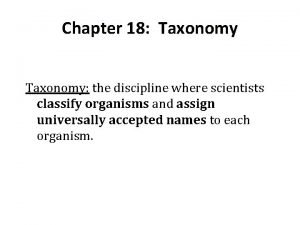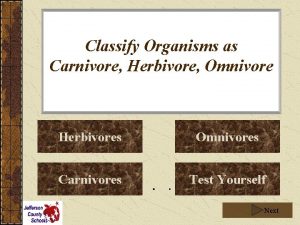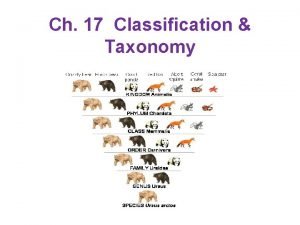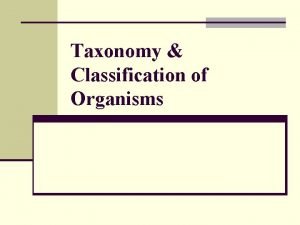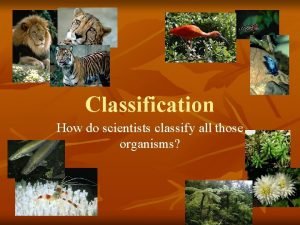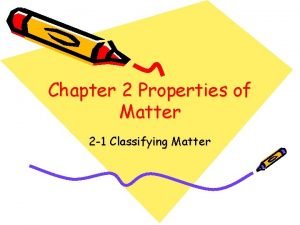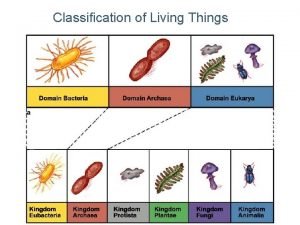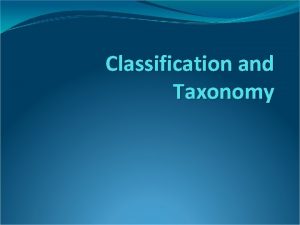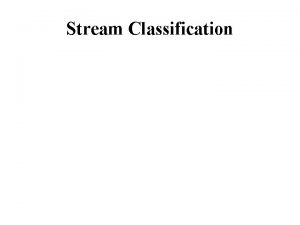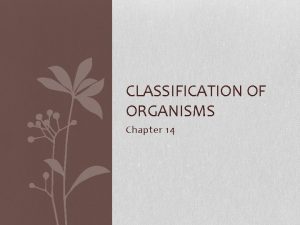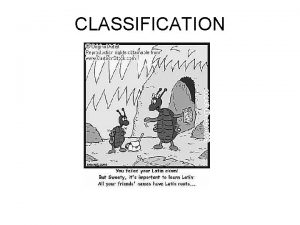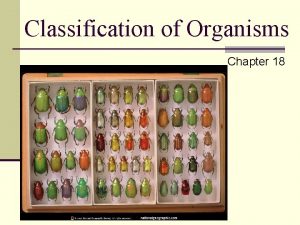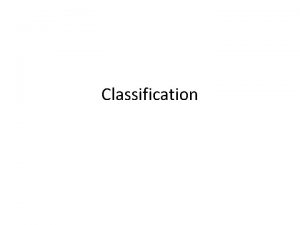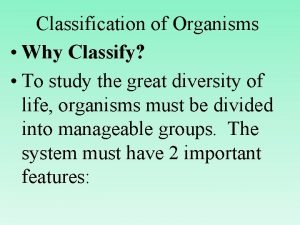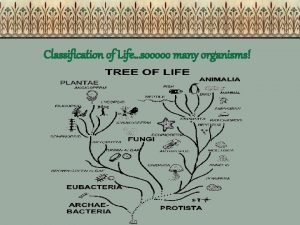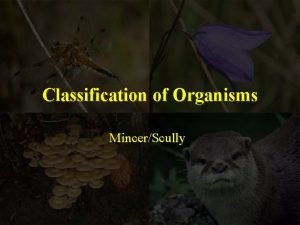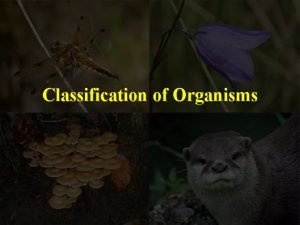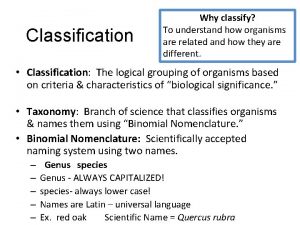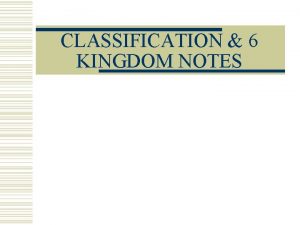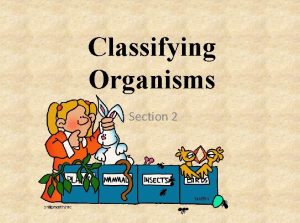Chapter 18 Classification Why Classify To name organisms















- Slides: 15

Chapter 18 Classification

Why Classify? �To name organisms and group them in a logical manner �Taxonomy-a universal system to name each organism �Binomial Nomenclature-Developed by Linnaeus; each species has a two-parted name �First word is capitalized � 2 nd word is not �Both are italicized �Ex. Homo sapien

Linnaeus’s System of Classification �From largest to smallest, most inclusive to least �Kingdom �Phylum �Class �Order �Family �Genus �Species �Kings play chess on fine grained sand �KPCOFGS

Linnaeus’s System

Modern Classification �Early taxonomists relied on body structures to classify organisms �After Darwin, we knew that animals shared traits due to common ancestors �Now we classify organisms based on evolutionary descent, not just physical similarities

Modern Classification �Derived characteristics-appear in recent parts of a lineage but not its older members �Cladogram-diagram based on derived characteristics

Cladogram

Similarities in DNA and RNA �Classification based on genetics, not just physical characteristics �Ex. -African vultures and American vultures were both grouped into the vulture family based on physical characteristics �Genetic analysis revealed that the American vulture is more closely related to the stork

Molecular Clocks �Uses DNA comparisons to estimate the length of time two species have been evolving independently �Some mutations occur that do not affect phenotypecalled neutral mutations �Neutral mutations accumulate over time, so by comparing shared and unique genes, one can estimate how long ago two species diverged from each other

Molecular Clocks

Kingdoms and Domains �Six Kingdoms (old)-Eubacteria, Archaebacteria, Protista, Fungi, Plantae, Animalia �Three Domain System (new) �Bacteria (Eubacteria) �Archaea (Archaebacteria) �Eukarya (Plants, Animals, Fungi, Protists) �See Figure 18 -12 p. 459

Three Domain System

Bacteria �Eubacteria-cell walls contain peptidoglycan �Archaea-cell walls lack peptidoglycan; live in extreme environments (volcanic hot springs, brine pools)

Eukarya �Consist of all organisms that have a nucleus �Protista-includes anything that cannot be classified as a plant, animal or fungus �Lot of diversity-auto- or heterotrophs, most unicellular but some multicellular (some algae) �Fungi-heterotrophs, multicellular (mushrooms) or unicellular (yeast)

Eukarya �Plantae- muticellular, autotrophs, non-motile �Animalia- muticellular, heterotrophic
 Why do scientists classify organisms?
Why do scientists classify organisms? Why do scientists classify living things?
Why do scientists classify living things? Competitive interaction
Competitive interaction Andreas carlsson bye bye bye
Andreas carlsson bye bye bye Grass herbivore carnivore omnivore
Grass herbivore carnivore omnivore What is the hierarchical system used to classify organisms?
What is the hierarchical system used to classify organisms? Carolus linnaeus
Carolus linnaeus How do scientists classify organisms
How do scientists classify organisms Unicellular multicellular organisms
Unicellular multicellular organisms Name
Name Don't ask why why why
Don't ask why why why Name two categories used to classify properties of matter
Name two categories used to classify properties of matter Why do we classify living things
Why do we classify living things Why isn't it a good idea to classify matter by its phases
Why isn't it a good idea to classify matter by its phases Why do biologists classify
Why do biologists classify Give the example of multicellular organisms
Give the example of multicellular organisms
